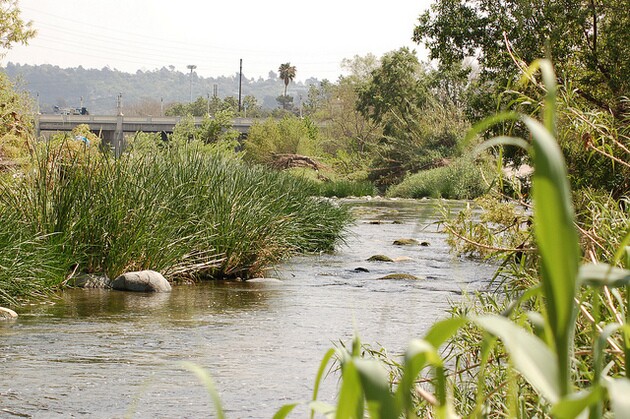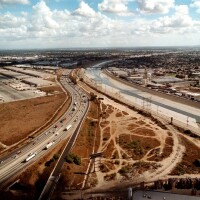Water Bond Draws Many Supporters, But Also Many Doubters

It's the worst consecutive three years for precipitation in 119 years of record-keeping. Governor Jerry Brown himself rang the alarm this year when he declared a statewide drought emergency.
No doubt California needs to conserve water and it needs money to do it. The big question is, what is the money supposed to do exactly? The answer lies in voter hands come November 4, when they decide during a statewide general election ballot on Proposition 1.
The proposition seeks to provide $7.545 billion for management of California's water resources for water-related projects. That pot of money is divided into discrete buckets, including $2.7 billion for water storage, $810 million for regional water supply projects, and $725 million for water recycling, among others. The bill doesn't set aside money for specific projects.
Those vying for the funds would have to go through a grant process to secure funds, but many of the categories could apply to projects along the Los Angeles River. A $327.5 million of a $1.496 billion bucket set aside for watershed protection and restoration has also been allocated for local conservancies, many of which work along the Los Angeles River, such as Santa Monica Mountains Conservancy and the San Gabriel and Lower Los Angeles Rivers and Mountains Conservancy -- both of which could receive $30 million. Another $100 million could be used for projects that protect urban creeks, and $20 million more could go towards funding multibenefit watershed and urban rivers enhancement projects such as the ones we've seen along the Los Angeles River watershed.
In a recent gathering, supporters came together to express their belief that this bond will do as it was meant to do: help California. "This bond focuses on regional solutions," said Senator Fran Pavley, as she took the stage. "The state is so different. Some areas of the state are near the deltas, some are not." Pavley then cited the various buckets that had specific allotments, its diversity of project areas -- from investment in stormwater to funding multi-benefit projects along urban rivers -- to her signaled the capacity of this bond to solve the various issues facing a large state like California.
Assemblymember Anthony Rendon also pointed out that the proposition was the work of sixteen public hearings, from "Eureka to Monterey, up and down the state," which perhaps explains why it has been supported by groups such as Natural Resources Defense Council and the Metropolitan Water District of Southern California.
Despite its wide support, detractors say passing this water bond isn't funding real solutions. It would only provide funds for "projects we don't need and causing community groups to compete for the little money that is leftover for projects that can actually do some good," said Ankur Patel of Food and Water Watch.
According to Patel, $2.7 billion of the funds are ostensibly set aside for storage projects, which to Patel is another term for dams. Such projects would only benefit corporate agri-business like those who grow almonds, a high-cash water-intensive crop. As a consequence, it might also affect "damage fragile ecosystems with little or no water during drought," according to the Center for Biological Diversity's statement. Those same type of dams aided the decline of the struggled Southern California steelhead trout.
In contrast, only $725 million is going toward water recycling projects, which community groups still have to compete for when the time comes. Instead of funding this bond, Patel says the state should be concentrating on specific community-by-community projects that actually address the water shortage issue. Though the bond does not authorize any tax increase because of its passing, it would result in state bond costs "averaging $360 million annually over 40 years."
That same amount could be diverted into better projects that are wholly allocated toward water conservation projects, says Patel. Projects such as repairing California's aging water system and helping users track their actual water usage come to mind. Little or no funding is available for these type of projects in the current proposition.
Nevertheless, it is difficult to discern what is the right decision. Nature Conservancy's Jay Ziegler points out, "This bond isn't just about dams, it's about sustainable supply for California."
As a number of other funding sources for water projects are slowly being depleted, organizations need fresh funds to even start something to address the drought situation. "We need this infusion of capital," said David Nahai, a Heal the Bay board member. He says even though the funds won't cover all of a project's cost, it could be a crucial starting point. Local matching funds could be raised to fill the gaps.
Patel continues to be skeptical about all these arguments. He points out that there have been six previous water bonds, all claiming to do exactly what Proposition 1 claims, but as yet, California still hasn't solved its crisis. For Patel, Food and Water Watch and other detractors, Proposition 1 doesn't substantively change the way California manages its water, it's the same old story.
Supporters admit the water bond isn't perfect. Ziegler says, "The water bond isn't a complete solution to our water needs, but it keeps things in balance." Perhaps the best summary for this water bond is the Rolling Stone's immortal words, as quoted by Nahai, "You can't always get what you want, but if you try sometime you find, you get what you need."
Learn more about Proposition 1 here. Arguments and rebuttals can be found here.


